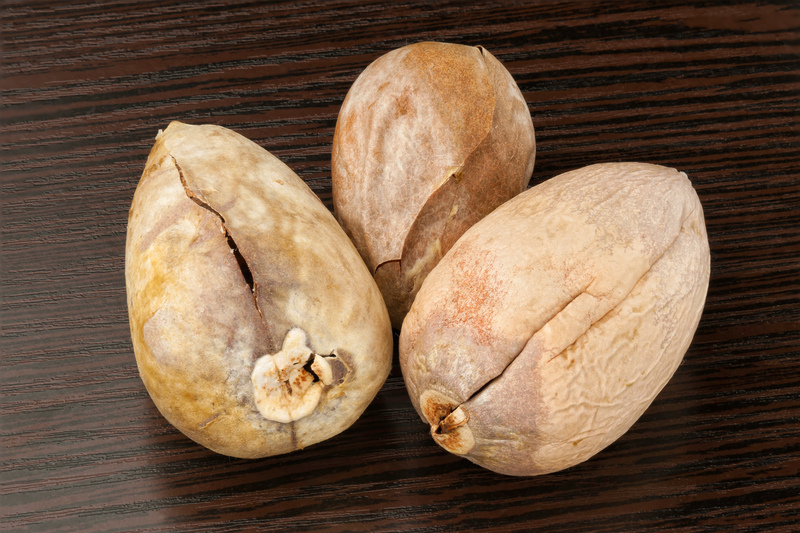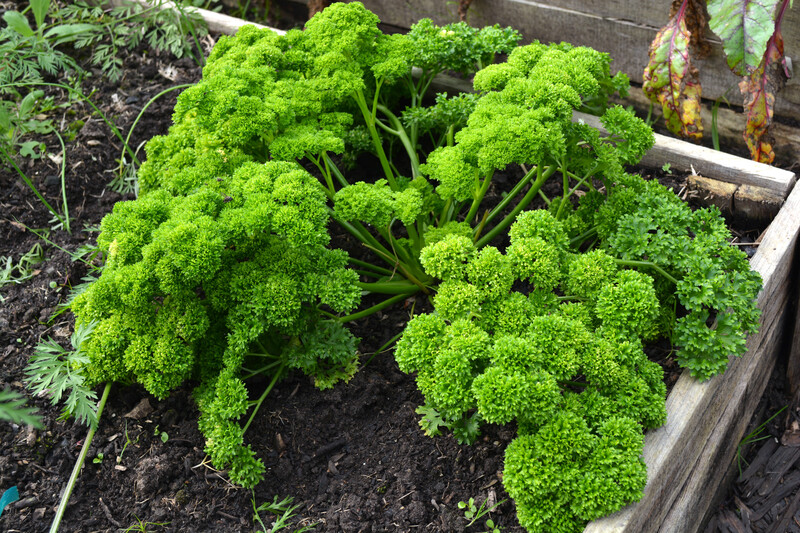Gardener's Guide: 3 Tips to Effectively Control Weeds
Posted on 20/09/2025
Gardener's Guide: 3 Tips to Effectively Control Weeds
Weed control is an unending challenge -- even for the most attentive gardeners. Persistent and adaptive, weeds can swiftly overtake flowerbeds, vegetable patches, and lawns if left unchecked. In this comprehensive gardener's guide, you'll discover three proven tips to effectively control weeds in your garden, making your outdoor space healthier and more beautiful. Whether you're a beginner or a seasoned green thumb, these strategies will help you maintain a weed-free landscape throughout the growing season.
Why is Weed Control Important?
Weeds compete with your desired plants for vital resources like water, nutrients, sunlight, and space. Moreover, they can harbor pests and diseases and diminish the aesthetic appeal of your garden. Understanding why effective weed management matters is the first step toward a thriving and resilient garden:
- Plant Health: Weeds can deprive vegetables, flowers, and shrubs of nutrients, affecting growth and yields.
- Garden Appearance: Overgrown weeds quickly ruin the neat, tidy look gardeners work hard to achieve.
- Pest Habitat: Dense weed patches offer safe haven to insects and rodents that may damage your plants.
- Allergies: Some common weeds, such as ragweed, trigger allergies in sensitive individuals.
With these concerns in mind, let's dive into our top three gardener-approved weed management strategies.

1. Effective Mulching Techniques
Mulching is one of the most effective, natural ways to control weeds in your garden. Covering bare soil with a protective layer of organic or inorganic material does more than just conserve moisture; it also acts as a formidable barrier against unwanted intruders.
Types of Mulch for Weed Control
- Organic Mulch: Includes bark chips, straw, shredded leaves, grass clippings, and compost. These not only block sunlight but also improve soil quality as they decompose.
- Inorganic Mulch: Options such as landscape fabric, plastic sheeting, and gravel offer longer-lasting weed suppression but don't enhance the soil.
How to Properly Apply Mulch
- Prepare the area: Remove any existing weeds by hand-pulling or shallow hoeing. Water the soil thoroughly.
- Apply mulch evenly: Spread a 2-4 inch layer of mulch around your plants, leaving a few inches of space around stems or trunks to prevent rot.
- Replenish as needed: Check your mulch layer periodically and top up where it has broken down or thinned out, particularly in high-traffic or exposed areas.
Mulching has the added benefit of improving soil structure, regulating temperature, and retaining moisture. Mulching for weed control is especially effective in vegetable gardens, flower beds, and around trees and shrubs.
2. Consistent & Strategic Hand Weeding
Hand pulling remains one of the most reliable and eco-friendly weed management methods available to gardeners. While it can be time-consuming, especially in larger gardens, diligent hand weeding is a crucial component of a successful weed control routine.
Best Practices for Hand Weeding
- Weed when the soil is moist: After rain or irrigation, soil is softer, making it easier to pull up roots intact.
- Use the right tools: Tools like hand forks, dandelion weeders, and hoes make weed removal more efficient.
- Get the roots: Many weeds, like dandelions and dock, will regrow if roots are left behind. Aim to remove as much of the root as possible.
- Dispose responsibly: If weeds have set seed or contain any disease, dispose of them in your municipal waste rather than composting to prevent re-infestation.
The Importance of Timing and Frequency
The old gardening adage, "Pull when small, spare no root", is wise advice. Young weeds are easier to remove and less likely to have set seeds. Set aside a few minutes every week, making weeding part of your regular garden maintenance rather than a monumental task. Frequent, small efforts can prevent a vast weed problem down the road.
3. Smart Planting & Ground Cover Strategies
Another powerful approach to garden weed control is designing your garden to crowd out weeds right from the start. By maximizing space and using ground covers or dense plantings, you make it difficult for weeds to gain a foothold.
Use Ground Covers for Natural Weed Suppression
- Living Mulch: Low-growing plants such as clover, thyme, or creeping phlox create a living carpet that shades soil and outcompetes weed seedlings.
- Perennial Borders: Shrubs and perennial flowers planted closely together will cover bare ground, reducing light and space for weed growth.
Plant Densely but Wisely
When establishing garden beds, follow recommended spacing closely but err towards the denser side within guidelines. Where possible, stagger planting so foliage covers soil thoroughly by early summer. This approach is particularly relevant in vegetable gardens, where interplanting quick-growing leafy greens between slower crops can prevent weeds from seizing open soil.
Other Cultural Practices for Preventing Weeds
- Rotate crops: Varying plant families each year makes it harder for specific weeds and pests to establish persistently.
- Sow cover crops: In fall or between vegetable crops, plant fast-growing cover crops (like buckwheat or rye) to protect and enrich soil while minimizing weed emergence.
Bonus Tip: Organic & Non-Toxic Weed Control Options
For those seeking additional tools beyond the core three strategies, consider these supplementary weed control techniques that are gentle on your garden's ecosystem:
- Vinegar sprays: Household vinegar targets young weeds on walkways or patios but should be applied judiciously to avoid harming desired plants.
- Boiling water: Pouring hot water over cracks in pavement or between stones provides instant weed burn-down, especially for annuals.
- Corn gluten meal: This organic byproduct can suppress weed seed germination when applied in early spring, although results may be variable.
Understanding Common Garden Weeds
To control weeds effectively, it helps to know your enemy. Some varieties are annuals that sprout, seed, and die in one season, while others are deep-rooted perennials that reappear year after year.
Typical Garden Weeds
- Annual weeds: Crabgrass, chickweed, purslane, pigweed
- Perennial weeds: Dandelion, bindweed, thistle, plantain
- Biennial weeds: Mullein, burdock, wild carrot
Knowing the lifecycle helps you time your weed control tactics for maximum effectiveness.
How to Prevent Weeds from Spreading
Effective weed management isn't just about getting rid of existing weeds -- prevention plays a key role. Here are additional ways to limit weed spread:
- Use clean compost and soil: Always source weed-free compost and potting mixes.
- Edge your garden beds: Physical edging keeps invasive grasses and weeds from creeping into garden beds from lawns.
- Avoid tilling unnecessarily: Tilling brings buried weed seeds to the surface where they can germinate.
- Inspect new plants: Check root balls and containers for hitchhiking weeds before planting.
The Role of Herbicides in Weed Management
While many gardeners prefer organic or manual methods, there are situations where herbicides can play a role in weed control. If you choose this route, always:
- Read and follow labels: Use selective herbicides that target only weeds and spare desired plants.
- Protect pollinators and pets: Avoid application during flowering and along bee pathways. Keep pets away until all surfaces are dry.
- Apply in proper weather: Don't spray herbicides on windy or rainy days to prevent drift and runoff.
Herbicides should be a last resort and part of an integrated pest management strategy, not the primary line of defense.
Summary: Creating a Weed-Free Garden
Staying on top of weeds doesn't need to be overwhelming. By proactively mulching, hand weeding, and planting smartly, you dramatically cut down on the time and effort required for garden weed control. Remember, a little prevention goes a long way, and consistency is key to keeping your landscape healthy, lush, and beautiful all season.
In summary, the best methods to manage weeds in your garden include:
- Applying mulch regularly to block light and suppress weed growth
- Hand weeding frequently and thoroughly, especially after rain
- Using dense planting and ground covers to minimize available space for weeds
- Understanding weed lifecycles so you can target them at the right time
- Implementing good prevention habits, such as using clean soil and proper edging
With the right techniques, every gardener can enjoy a more manageable, weed-free landscape. Start applying these time-tested weed control tips today and reclaim your garden from invasive weeds for good!

Frequently Asked Questions - Gardener's Guide to Weed Control
How often should I mulch my garden for weed control?
Most gardeners renew mulch once a year, either in spring or fall, to maintain a 2-4 inch layer. Some fast-decomposing mulches may need to be replenished more often.
Is it better to pull weeds or use herbicides?
Hand pulling eliminates the entire plant and root, making it the safest method for most home gardens. Herbicides should be used sparingly and only when necessary, as part of an integrated plan.
Can I compost weeds after removing them?
If weeds haven't gone to seed or are free of disease, you can compost them. However, to prevent weed spread, avoid composting mature, seeding, or invasive weed species.
What's the best time of year to focus on garden weed management?
Early spring is the most crucial period. Remove dormant weeds and mulch before weeds have a chance to germinate. Consistent weeding through the growing season keeps problems manageable.
Final Thoughts
Effective weed control is essential for cultivating a productive, attractive, and healthy garden. With these three practical tips (mulching, hand weeding, and smart planting), alongside preventative measures, you'll be well on your way to mastering weed management like a pro gardener. Happy gardening!

